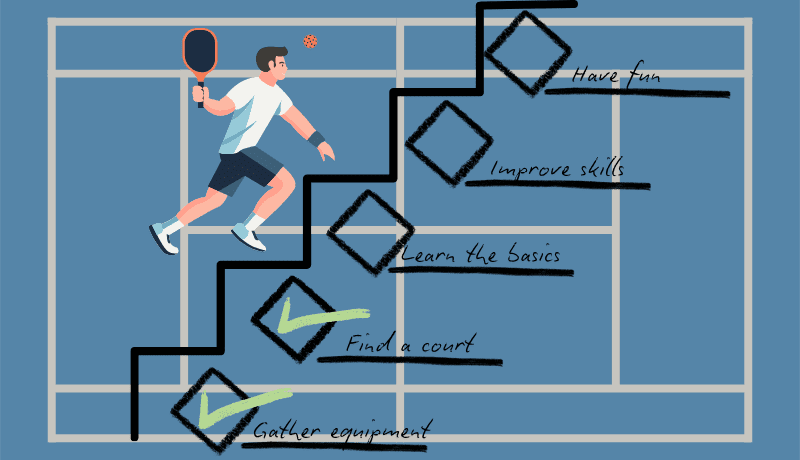Not Completing the Task. Psychology of Checklist Fatigue
It is a joy when the checklists are implemented in the work. However, managers face a new danger — fatigue from checklists. What causes it and how to deal with it?

Pilots Talk a Lot About Checklists
Reddit is an excellent platform for exploring discussions related to checklists. Some time ago, I came across a thread where pilots talked about the challenges of adhering to checklist execution. As you might expect, pilots do complete the necessary, the most important tasks; you definitely don’t want them distracted from their responsibilities.
However, we are human, and we often struggle with consistency in repetitive activities. Sometimes, these tasks induce anxiety, and at other times, we mistakenly believe we’re smarter than simple instructions. Yet, simple instructions are, in fact, more reliable because they don't engage in that comparison.
Let’s examine why humans often struggle to focus on the steps of checklists they have seen many times.
Memorizing Checklists Considered Harmful
What happens if you memorize a shopping list? It’s convenient, as well as you’ve also saved a piece of paper or a note on your smartphone.
What if you memorize a to-do list? It might work for a small task, but I wouldn’t recommend relying on this method for larger lists. Few of us have fixed, concrete plans; they are typically dynamic, if not fluid. Digital lists with smart goals and other productivity features are far more effective.
What about creating a checklist and then memorizing it? If you’re a child who just learned a kid’s checklist, congratulations on your achievement!
But if you are studying to become a pilot, memorizing checklists can lead to failure on your exam [1]:
The Federal Aviation Authority (FAA) fails a pilot in his or her test if a physical checklist is not used and disallows checklists by rote. Memory is not considered an acceptable substitute for a physical checklist.
Why is that? The risks are too high, and the operating systems are too complex. Relying on a sense of completing your mental “to-do list” is unacceptable; we can’t maintain aviation safety with such a low margin for error based on human memory.
Even if you document everything and create the most effective checklist structure, you will still face a significant issue: checklist fatigue.
What is Checklist Fatigue?
What Causes Checklist Fatigue?
Checklist fatigue can arise from natural, design, and organizational factors:
- Repetitive use of checklists does not align well with human nature.
- Poorly designed checklists disrupt the user experience.
- An organizational culture that does not support the use of checklists can hinder their effectiveness.
Repetitive Use of Checklists Does Not Align Well With Human Nature
It’s a good opportunity to reference the article “Smarter Clinical Checklists” [2]:
The human mind is well suited for creative thinking during unpredictable circumstances with imperfect information; it is not so well suited for memorization or repetitive tasks while subject to fatigue or distraction.
Indeed, if we seek an answer in evolutionary theory, for a long time, the activities that helped people survive did not include the actions listed in the daily list.
It is our brains, social structures, buildings, and cities that have freed some individuals from organizing their “research” solely around achieving the necessary number of calories to stay alive.
Our nature is rooted in food-gathering and problem-solving, and the application of systematic checklists feels somewhat... unnatural, you know.
Here are the results from aviation [3]:
Checklist complacency is common, and is responsible for countless incidents and occurrences (thankfully most of them minor or inconsequential). As an example, I can think of three relatively recent B737 incidents in this part of the world alone (Oceania) where the after takeoff checklist was actioned incorrectly and the aircraft reached 10,000' without pressurisation.
It's important to recognise it as inherent human behaviour, and take steps to mitigate the threat. For me, it's consciously slowing down and holding my tongue on every checklist action or response until I've conclusively checked and completed the item correctly. Completing a checklist in record time looks cool on video but is rarely beneficial. It takes a while to embed this as standard.
Poorly Designed Checklists Disrupt the User Experience
There are many mistakes you can have when creating a checklist.
These mistakes may cause certain steps to appear unproductive or even unnecessary, resulting in a loss of motivation to follow them. Over time, the repetitive nature of this “second knowledge layer” on top of the actual document can lead to inconsistencies.
Some individuals may remember which points to follow, while others may forget. As a result, the benefits of consistency diminish, and quality is compromised.
The necessity of physically retrieving a book of checklists, only to find a new one, has sparked serious discussions within the pilots' community. This has created a dichotomy between checklists and flows in the industry [3].
Flow typically refers to a memorized sequence of actions. Once completed, it's time to use a checklist in the DO-CONFIRM manner:
The do verify method is the standard in commercial aviation. Do a flow then confirm it with the checklist.
Let’s also consider the problem statement from the thread that inspired this post:
I read the step, did the first part, checked it off, and missed the last part. It was written right there. It was underlined. But I "knew" what to do. It was busy.
The key item design flaw that stands out here is the presence of two parts, which conceals too much complexity.
Another design issue is that aviation checklists are typically printed on laminated paper. A dedicated blog post outlines the advantages and disadvantages of paper, while another post highlights where digital aviation checklists offer clear benefits.

Furthermore, it’s essential to understand that the checklist is a foundational and cost-effective way to enhance quality in various aspects of our lives. However, it is not the ultimate solution on the path to success. You can integrate checklists into both physical and digital environments, allowing for their automatic application.
An Organizational Culture That Does Not Support the Use of Checklists Can Hinder Their Effectiveness
In far away 1950, William Deming, the father of quality, required the top management of Japanese industries to attend his lectures. Why did he do this? Because he believed it was the only way to facilitate real change.
Here are his words addressed to the Japanese top management [5]:
However, no matter how excellent your technicians, you who are leaders, must strive for advances in the improvement of product quality and uniformity if your technicians are to be able to make improvements. The first step, therefore, belongs with management. First, your company technicians and your factories must know that you have a fervor for advancing product quality and uniformity and a sense of responsibility for product quality.
The same principle applies to the use of checklists. If checklists are not integrated into the corporate structure and culture, it will be challenging to promote their application throughout the entire company.
Checklists often face resistance during their introduction and may even require a rebalance of power — something that regular employees may struggle to manage. Without a supportive infrastructure built around checklists, their usage will inevitably lead to fatigue and ultimately fade away.
Conclusion: Checklist Fatigue Is Your New Enemy for Vital Tasks
Introducing checklists into your organization is just the beginning. A new and subtle enemy emerges, threatening to undermine your efforts: checklist fatigue. This challenge significantly impacts the accurate management of essential activities.
It highlights the necessity for a well-designed system that combines both digital and physical checklists, ensuring they are practical and engaging. By fostering a supportive organizational culture and leveraging an understanding of human nature alongside effective checklist design, you can combat fatigue and maintain productivity.
Was it useful to read about the challenges associated with developing a mature checklist culture? Subscribe to the “So List” blog — you won’t miss other tips about these subtle yet powerful tools. Are you already familiar with them? I doubt it — there are too many secrets they hold.
List of Links
[1] “The checklist checkup & checklist fatigue – Say what? How does it impact clinical perfusion practice” from the “PMC” website
[2] Grigg E., “Smarter Clinical Checklists: How to Minimize Checklist Fatigue and Maximize Clinician Performance”
[3] Comment for the “Pilots: Running a familiar checklist. Do you ever find yourself checking off an item without actually completing the entire step? How do you avoid it?” in the “r/aviation” community on Reddit
[4] Comment for the “Doing checklists from memory??” discussion in the “r/flying” community on Reddit
[5] “Speech by Dr. Deming to Japanese Business Leaders in 1950” from “The W. Edwards Deming Institute” website



